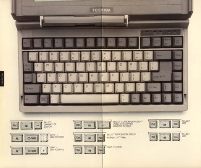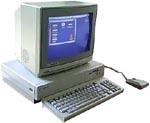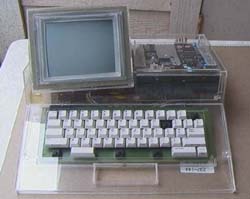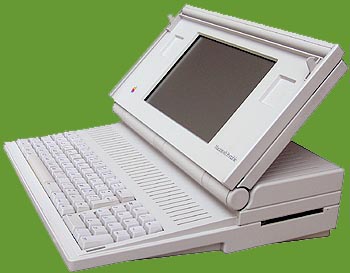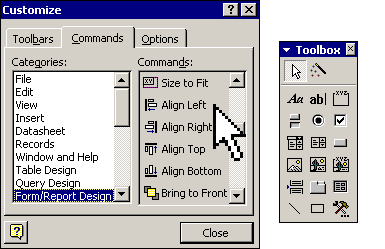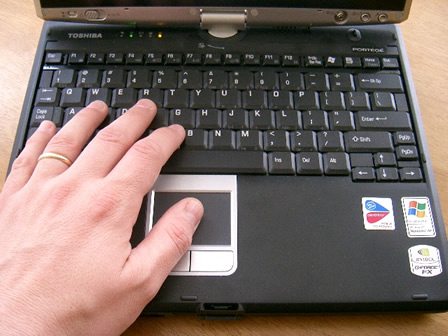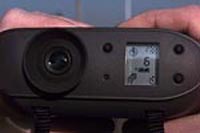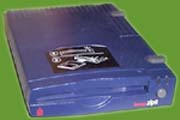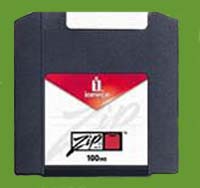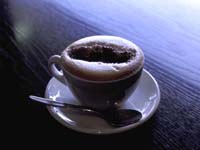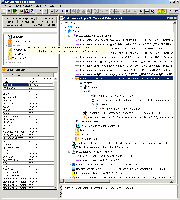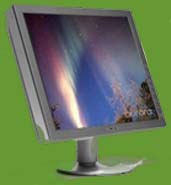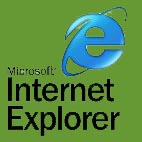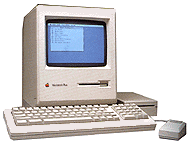 |
A Digital Timeline A History of Digital Technology 1986
to 1995 (first
added May 15, 2002
|
 |
An attempt at charting the trajectory of digital technology, with special attention to graphical applications. Comments solicited, corrections gladly considered, links and images most graciously desired. (Special note: those attributed as inventors or creators more often were joined by many others, some named, some not. And dates are often only approximations.)
Laptop computer
Toshiba
My love affair with the T1100+ began in the early Summer of 2000. While perusing the offerings of an annual street wide garage sale in my neighbourhood, I spotted what appeared to be an old word processor for sale for $25. I looked it over. The owner pointed out rather flatly that it ran DOS and was fully functional. His spouse was much more enthusiastic about my investigations, adding how useful it had been.
—www.cyberus.ca/~pgillil/toshiba.html
MacPlus
Apple
Announced in January 1986, the Mac Plus was the answer to complaints that the original Mac was not expandable. It doubled the ROM of the 512k from 64k to 128k, and increased the RAM to 1 MB (expandable to 4 MB). It was the first Mac to include a SCSI port, allowing for a variety of external peripherals, and was the first mac to use the now familiar platinum case color (although it initially shipped in beige). The Mac Plus originally sold for $2600, and was sold to educational markets as the Mac ED.
—Glen Sanford
Amiga 1000
Jay Milner
The conceptor of the Amiga 1000 was Jay Miner, who created the Atari 800
many years before. He wanted to make the most powerful computer ever,
then he joined a little California company called Amiga. He used the principle
of the three coprocessors (again) to help the main processor.
— oldcomputers.com
Liquid Crystal Display (LCD)
Toshiba
A liquid crystal display (LCD) test cell
Today, LCDs are everywhere we look, but they didn't sprout up overnight. It took a long time to get from the discovery of liquid crystals to the multitude of LCD applications we now enjoy. Liquid crystals were first discovered in 1888, by Austrian botanist Friedrich Reinitzer. Reinitzer observed that when he melted a curious cholesterol-like substance (cholesteryl benzoate), it first became a cloudy liquid and then cleared up as its temperature rose. Upon cooling, the liquid turned blue before finally crystallizing. Eighty years passed before RCA made the first experimental LCD in 1968. Since then, LCD manufacturers have steadily developed ingenious variations and improvements on the technology, taking the LCD to amazing levels of technical complexity. And there is every indication that we will continue to enjoy new LCD developments in the future!
—Marshall Brain
America On Line (AOL)
The Internet bulletin-board system Quantum Computer Services acquires
a new name, America Online (AOL), and focuses on recruiting a diverse,
broad-based subscribership. From 1989 to 1998, AOL grows from its roots
as an insignificant start-up with barely 100,000 members, to an industry
leader with more than 14 million members.
— The Moschovitis Group
Computer virus
Brain
The "Brain" virus is probably the earliest MS-DOS virus. At one time it was the most widespread of PC viral programs.
Brain is a boot sector infector, somewhat longer than some of the more recent BSIs. Brain occupies three sectors itself, and, as is usual with BSIs, repositions the normal boot sector in order to "mimic" the boot process. As the boot sector is only a single sector, Brain, in infecting a disk, reserves two additional sectors on the disk for the remainder of itself, plus a third for the original boot sector.
—Robert M. Slade
Illustrator
Adobe
Adobe® Illustrator® 10 software defines the future of vector graphics
with groundbreaking creative options and powerful tools for efficiently
publishing artwork on the Web, in print, everywhere. Produce superb Web
graphics using symbols and innovative slicing options. Explore creative
ideas with live distortion tools. Publish in record time with dynamic
data-driven graphics and other productivity features.
—Adobe
XPress
Quark
Software engineer Tim Gill founded Quark in 1981, producing the first
word processor for the Apple II computer. Gill named the company Quark
after the subatomic particle proposed as a building block for all matter—an
appropriate metaphor for the role that QuarkXPress would soon come to
play in the electronic publishing industry.
—Quark
Cat
Canon
In 1987 Canon USA Inc. released a new computer named the Canon Cat. This computer was targeted at low-level clerical worked such as secretaries. After six months on the market and with 20,000 units sold, Canon discontinued the Cat. The Cat featured an innovative text based user interface that did not rely upon a mouse, icons, or graphics. The key person behind the Cat was Mr. Jef Raskin, an eclectic gadgeteer, who began the design of the Cat during his work on the first Macintosh project at Apple Computer in 1979.
—David T. Craig
Worm
On the evening of November 2, 1988, a self-replicating program was released upon the Internet. This program (a worm) invaded VAX and Sun-3 computers running versions of Berkeley UNIX, and used their resources to attack still more computers. Within the space of hours this program had spread across the U.S., infecting hundreds or thousands of computers and making many of them unusable due to the burden of its activity. This paper provides a chronology for the outbreak and presents a detailed description of the internals of the worm, based on a C version produced by decompiling.
—Donn Seeley
Anti-virus software
In service for nearly 10 years, Disinfectant was probably the most popular
Macintosh anti-viral program of all time. It was free, it was so perfectly
programmed that it caused no extension conflicts, and it was updated promptly
every time a new virus was discovered. Disinfectant was an application
and a companion INIT, providing both on-demand and and on-access or background
scanning. John Norstad retired Disinfectant on 6 May, 1998.
—John Norstad
Graphics super computers
Apollo, Ardent, Stellar, Cray
A broad term for one of the fastest computers currently available. Such computers are typically used for number crunching including scientific simulations, (animated) graphics, analysis of geological data (e.g. in petrochemical prospecting), structural analysis, computational fluid dynamics, physics, chemistry, electronic design, nuclear energy research and meteorology. Perhaps the best known supercomputer manufacturer is Cray Research.
—Free On-line Dictionary of Computing
Portable Macintosh
Apple
My love affair with the T1100+ began in the early Summer of 2000. While
perusing the offerings of an annual street wide garage sale in my neighbourhood,
I spotted what appeared to be a old word processor for sale for $25. I
looked it over. The owner pointed out rather flatly that it ran DOS and
was fully functional. His spouse was much more enthusiastic about my investigations,
adding how useful it had been
—www.cyberus.ca/~pgillil/toshiba.html
Office
Microsoft
A twist on integrated software began with the introduction of Microsoft Office: a single box containing versions of Microsoft's word processing, spreadsheet, and presentation programs, along with a few alterations that let them work together in an integrated way. Like integrated programs, such "suites" are very popular. Other software suites have been offered by Lotus, Corel, and Sun.
—Gareth Jones
Touch sensitive pad/touchpad
Touchpads are relative motion devices. That is, there is no isomorphism from the screen to the touchpad. Instead, relative motion of the user's fingers causes relative motion of the cursor. The buttons below or above the pad serve as mouse standard buttons. You can also click by tapping your finger on the touchpad, and drag with a tap following by a continuous pointing motion (a click-and-a-half). Some touchpads also have "hotspots": locations on the touchpad that indicate user intentions other than pointing. For example, on certain touchpads, moving your finger along the right edge of the touch pad will control the scrollbar and scroll the window that has the focus vertically. Moving the finger on the bottom of the touchpad often scrolls in horizontal direction. Some touchpads can emulate multiple mouse buttons by either tapping in a special corner of the pad, or by tapping with two or more fingers.
—en.wilipedia.org.wiki/Touchpad
Multi media platform specifications
Object Management Group, including Microsoft, IBM, AT&T and others
The Object Management Group (OMG) is an open membership, not-for-profit consortium that produces and maintains computer industry specifications for interoperable enterprise applications. Our membership includes virtually every large company in the computer industry, and hundreds of smaller ones. Most of the companies that shape enterprise and Internet computing today are represented on our Board of Directors.
—www.omg.org/
Photoshop
Adobe
The story of one of the original "killer apps" begins in Ann
Arbor, Michigan (USA) with a college professor named Glenn Knoll. Glenn
was a photo enthusiast who maintained a darkroom in the family basement.
He was also a technology aficionado intrigued by the emergence of the
personal computer. His two sons, Thomas and John, inherited their father's
inquisitive nature. And the vision for future greatness began with their
exposure to Glenn's basement darkroom and with the Apple II Plus that
he brought home for research projects.
—Derrick Story
Macromedia
In November of 1996, Macromedia was getting tired of hearing about our product when they worked with Disney to use Macromedia1s Shockwave product. So Macromedia approached us about working together. We had been running FutureWave for 4 years with a total investment of $500,000 and the idea of having access to the resources of a larger company to help us get FutureSplash established in a market that was full of competitors and growing slowly seemed like a good one. So in December of 1996, we sold FutureWave Software to Macromedia and FutureSplash Animator became Macromedia Flash 1.0
— Jonathan Gay
Personal Digital Assistant
Apple
For the next three years, PDA sales dwindled, and were almost off the charts.
Then, in March 1996, Palm™, Inc. delivered the industry's first truly compelling handheld computer, the PalmPilot. A robust yet small go-anywhere device that helped people manage and organize their personal and professional lives by providing instant, anytime access to schedules, important phone numbers, to-do lists and other key information. This new type of information management was met with tremendous acceptance. Mobile, busy people embraced the small and powerful Palm™ handhelds.
—www.handango.com/PDAHistory.jsp?siteId=1
QuickTake 100 camera
Apple
Apple sees the camera being used for business, education and "memories". It is fully automatic, with a built-in flash. A window at the rear of the camera is surrounded by four buttons which control the flash, picture resolution, self-timer, and delete functions. The camera can store up to 32 images at a resolution of 320 x 240 pixels - each a quarter of a 13 inch monitor screenful - or eight 640 x 480 pixel images - each a full 13 inch monitor screenful - for up to a year in its internal flash memory. The resolution can be changed on a shot-by-shot basis if required
—John
Henshall
inventors.about.com/library/inventors/bldigitalcamera.htm
Zip disk and drive
Iomega
In March 1995, Iomega launched the low-cost Iomega Zip 100MB drive for the consumer and small business market. It was an instant success that revolutionized the storage industry, becoming one of the fastest-selling and most successful peripherals in the history of computing. Today, Iomega has sold more than 55 million Zip drives and 350 million Zip disks
Java
Sun Microsystems
To demonstrate what they saw as a possible future in digital devices, the Green Team locked themselves away in an anonymous office on Sand Hill Road in Menlo Park, cut all regular communications with Sun, and worked around the clock for 18 months. In the summer of 1992, they emerged with a working demo, an interactive, handheld home-entertainment device controller with an animated touchscreen user interface.
In the demo, the now familiar Java technology mascot, Duke, was shown waving and doing cartwheels on the screen. The device was called *7 ("StarSeven"), named after an "answer your phone from any extension" feature of the phone system in the Green Team office. Duke was actually a representation of the *7's "agent", a software entity that did tasks on behalf of the user.
—Jon Byous
Flat screen
Sony
Internet Explorer
Microsoft
In the early 90s—the dawn of history as far as the World Wide Web is concerned—relatively few users were communicating across this global network. They used an assortment of shareware and other software for Microsoft Windows® operating system.
In 1995, Microsoft hosted an Internet Strategy Day and announced its commitment to adding Internet capabilities to all its products. In fulfillment of that announcement, Microsoft Internet Explorer arrived as both a graphical Web browser and the name for a set of technologies.
—www.microsoft.com/windows/WinHistoryIE.mspx
| General references | Computer Technology Timeline by The Bookmark Chronology of Personal Computers A Chronology of Computer History Computing History, Myths and Legends (Ian Darwin) A Brief History of Computer Technology History of Communication From Cave Drawings |
|
|
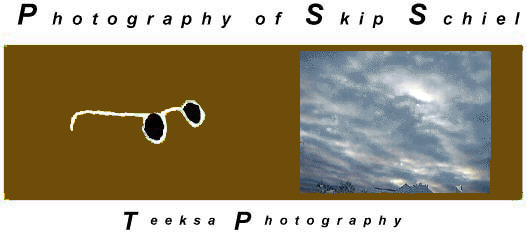 |
